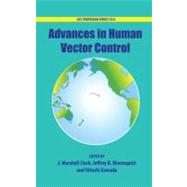
Note: Supplemental materials are not guaranteed with Rental or Used book purchases.
Purchase Benefits
What is included with this book?
| Introduction | |
| Vector biology diagnostics and public health pesticides development through the Product Development Partnership route | p. 1 |
| Current Status and Control Practices | |
| Pyrethroid resistance in the African malaria vector, Anopheles gambiae, and potential of alternative insecticides for indoor residual spraying and use on mosquito nets | p. 13 |
| Insecticide resistance in the mosquito Culex pipiens Complex: Concerns about development of pyrethroid resistance | p. 27 |
| Vector control for prevention of dengue: Current status and future strategies | p. 39 |
| Current Status and challenges of Chagas disease control initiatives in the Americas | p. 59 |
| Human head lice: Status, control and resistance | p. 73 |
| ABC's of indoor health: Allergens, Baits, and Cockroach mitigation Strategies | p. 89 |
| Current status of house dust mites in Japan and prospects for control agents | p. 107 |
| Novel Approaches and Resistance Management | |
| Controlling Dengue virus transmission in the field with genetically modified mosquitoes | p. 123 |
| Pharmacological mapping of the acetylcholinesterase catalytic gorge in mosquitoes with bis(n)-tacrines | p. 143 |
| Olyset® net: A long lasting insecticidal net for vector control | p. 153 |
| Biological efficacy of metofluthrin, a new pyrethroid insecticide, highly eff4ective against mosquitoes | p. 161 |
| An inconvenient truth of pyrethroids-Do they have a promising future? | p. 171 |
| The body louse, Pediculus humanus humanus (Phthiraptera: Pediculidae), genome project: Past, present, and opportunities for the futures | p. 191 |
| Resistance management of the human head louse using molecular tools | p. 203 |
| Monitoring of kdr-mediated pyrethroid resistance in head louse colonies in Japan | p. 217 |
| Indexes | |
| Author Index | p. 227 |
| Subject Index | p. 229 |
| Table of Contents provided by Ingram. All Rights Reserved. |
The New copy of this book will include any supplemental materials advertised. Please check the title of the book to determine if it should include any access cards, study guides, lab manuals, CDs, etc.
The Used, Rental and eBook copies of this book are not guaranteed to include any supplemental materials. Typically, only the book itself is included. This is true even if the title states it includes any access cards, study guides, lab manuals, CDs, etc.